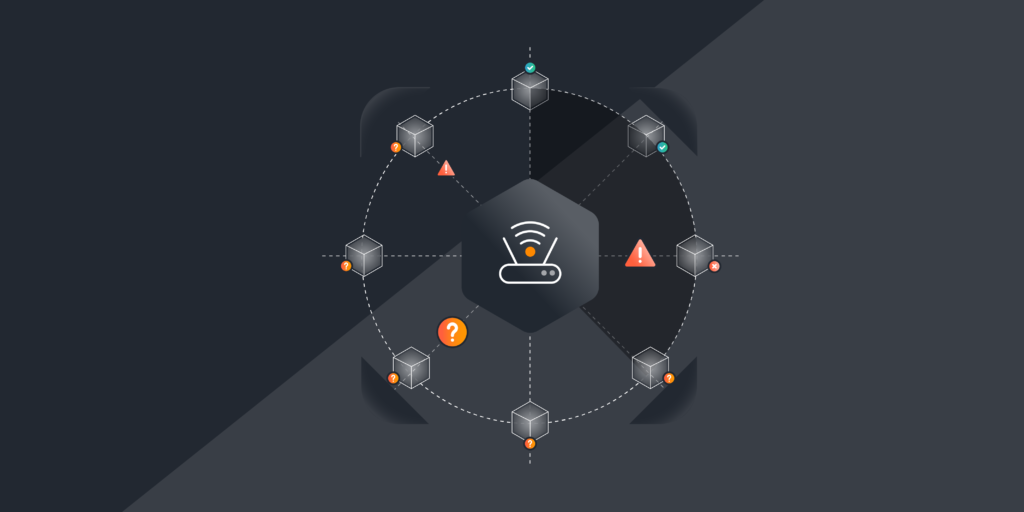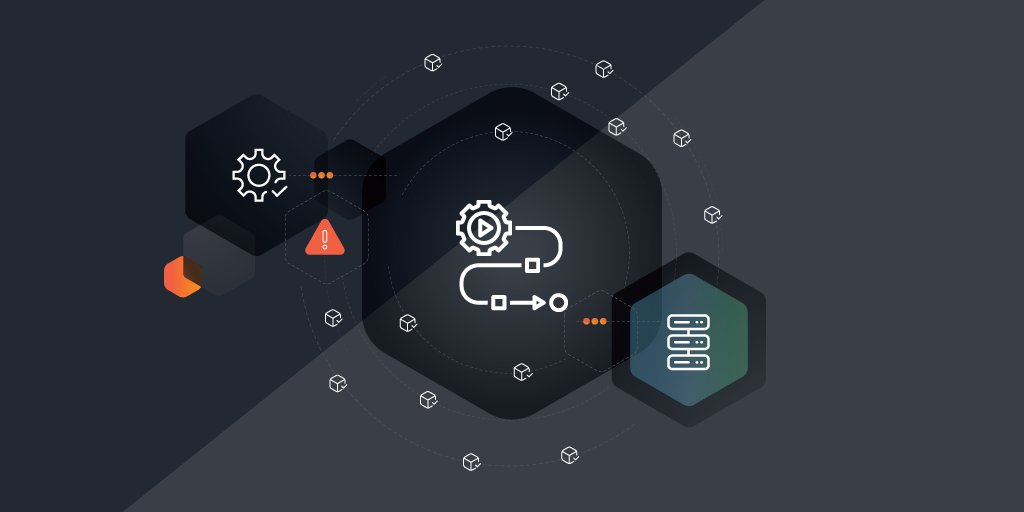
As digital transformation accelerates, the threats your organization faces are evolving, making your job increasingly challenging when it comes to protecting sensitive data and avoiding costly disruptions. Understanding network security has become paramount for enterprise and mid-market organizations. Cybersecurity experts like you must navigate complex environments to safeguard their company’s networks effectively. This article will explore various facets of network security management, providing insights and strategies to guide you in staying one step ahead of potential threats. From real-time monitoring and automation to incident response, risk management, and compliance, the right network security management tools can make a significant difference in maintaining your robust security posture.
What is Network Security Management?
Network Security Management (NSM) involves the processes, policies, and technologies used to protect networked systems from unauthorized access, misuse, or theft. It encompasses a wide range of activities designed to safeguard the integrity, confidentiality, and availability of your data and network resources. This management includes the deployment and maintenance of security measures such as firewalls, intrusion detection systems, and antivirus software, alongside regular monitoring and auditing of your network activities. Effective network security management is essential for keeping your network safe and secure. By identifying vulnerabilities and mitigating network security risks, you can ensure that only authorized users have access to your critical information. This not only protects your data but also maintains the overall health and security of your entire network.
What are Some Common Types of Network Security?
1. Web Content Filtering: Web Content Filtering is often implemented to track and regulate access to websites based on their content categories. Access to sites known for distributing malware is blocked while allowing access to trusted sites, ensuring safe web browsing for employees.
2. Intrusion Detection and Prevention Systems (IDPS): These systems monitor network traffic for suspicious activity and can take action to prevent breaches. For example, an IDPS can detect an unusually high number of login attempts from a single IP address, flagging it as a potential brute-force attack. The system can then automatically block the IP address to prevent unauthorized access.
3. Virtual Private Networks (VPNs): VPNs provide secure connections to remote networks, encrypting data to protect it from interception. For instance, when employees work remotely, they can use a VPN to securely connect to the company’s internal network. This ensures that sensitive information, such as emails and documents, is encrypted and safe from eavesdropping while transmitted over the internet.
4. Endpoint Protection/Response (EDR): This includes antivirus and anti-malware software that detect and remove malicious software, preventing network security threats. For example, EDR monitors files for encryption or mass changes to stop ransomware and can integrate with Intrusion Detection and Prevention Systems (IDPS) to prevent network spread. If an employee downloads ransomware, EDR can identify and quarantine or delete the threat before it causes damage.
5. Access Control in Network Security: Access control mechanisms ensure that only authorized users can access specific resources, reducing the risk of unauthorized access. For instance, a company might implement role-based access control (RBAC) where only HR personnel have access to sensitive employee records, while other staff members cannot access this information. This minimizes the risk of data breaches by limiting access to those who need it for their roles.
Who Owns Network Security Management and Why Does It Matter?
Ownership of network security management typically falls under the purview of the IT department, specifically your cybersecurity teams. However, effective security management requires collaboration across all your departments. It matters because a holistic approach ensures that security measures are integrated into every aspect of your organization, minimizing vulnerabilities and enhancing overall security posture.
What are the Toughest Challenges of Network Security Management?
Each of the following challenges requires a strategic and multi-faceted approach to network security management, combining technology, processes, and human factors to protect your organizational assets effectively.
Evolving Threat Landscape: The cybersecurity landscape is constantly evolving with new and sophisticated cyber threats emerging at an alarming rate. This includes advanced persistent threats (APTs), ransomware, zero-day exploits, and phishing attacks. Security teams must stay ahead of these threats by continuously updating their knowledge, tools, and strategies to anticipate and mitigate potential attacks. The rapid development of malware and the increasing use of artificial intelligence (AI) by attackers make this an ongoing and dynamic challenge.
Resource Constraints: Balancing limited resources while maintaining robust security measures is a significant challenge for many organizations. This includes not only financial constraints but also limitations in personnel and technological resources. Small to medium-sized businesses, in particular, often struggle to allocate sufficient budget for comprehensive security solutions. Additionally, there is a global shortage of skilled cybersecurity professionals, making it difficult for you to find and retain qualified staff to manage and respond to security incidents effectively.
Complexity of Networks: Modern network environments are becoming increasingly complex due to the proliferation of devices, platforms, and applications. This complexity is further compounded by the rise of cloud computing, Internet of Things (IoT) devices, and remote work arrangements. Managing security across such a diverse and distributed network environment requires sophisticated tools and strategies to ensure that all endpoints are protected and that security policies are consistently enforced across the entire network.
Insider Threats: Mitigating risks posed by insiders—employees, contractors, or business partners—who may unintentionally or maliciously compromise your network security is a critical concern. Insider threats can stem from negligence, such as falling for phishing scams, or from malicious intent, such as data theft or sabotage. Implementing effective access controls, monitoring user behavior, and fostering a culture of security awareness and training, as well as testing user knowledge with simulated scenarios, are essential to reduce your risk of insider threats.
Visibility and Control: Achieving complete visibility and control over all your network activities and assets is crucial for effective security management. Without comprehensive visibility, your security teams cannot detect and respond to threats in a timely manner. This includes monitoring network traffic, endpoints, and user activities to identify any anomalies or suspicious behavior. Implementing robust security information and event management (SIEM) systems and ensuring seamless integration of various security tools can help you enhance visibility and control, enabling more proactive and informed security measures.
Choosing the Right Network Security Management Solution
Here are some key considerations to help you choose the best platform for your needs:
Selecting a Network Security Management Platform
When you’re evaluating network security management solutions, it’s crucial to consider your organization’s unique requirements. Think about the specific threats you face and the security needs of your network. Do you need robust protection against external threats, or are insider threats your primary concern? Look for a solution that offers comprehensive protection, covering all potential vulnerabilities.
Integration with Existing IT Infrastructure and Scalability
One of the most critical factors is how well the new solution will integrate with your current IT infrastructure. A seamless integration ensures that you can deploy the new system without major disruptions. Additionally, consider the scalability of the solution. As your business grows, your network security needs will evolve. Choose a platform that can scale with your business, accommodating increased traffic and additional security requirements without compromising performance.
Ensuring Ease of Use and User-Friendly Interface
The solution you choose should be intuitive, making it easy for your team to monitor, manage, and respond to security incidents quickly. Look for features like customizable dashboards, clear reporting tools, and automated alerts that streamline the management process.
By keeping these considerations in mind, you’ll be well on your way to selecting a network security management solution that not only meets your current needs but also grows with your organization, providing robust protection and peace of mind.
When it comes to network security management, finding the right solution tailored to your organization’s specific needs is crucial.
Request a demo today!
Our asset discovery solutions provide a comprehensive inventory of all network devices, which is essential for effective network security management. By identifying all devices, we help minimize risks associated with rogue devices and lost time in identifying attack endpoints. Contact us to request a demo and explore how our solutions can enhance your network security posture.
Go Unlimited for 14 days
2 weeks of unlimited scanning
Start now. Use when ready
No card required
Access all features
5-minute onboarding


